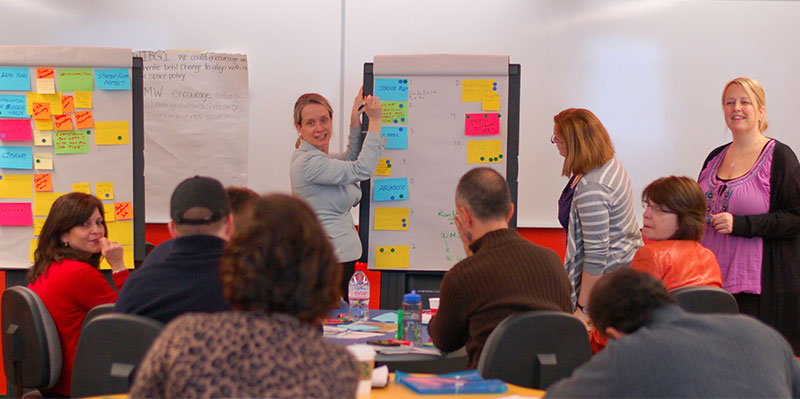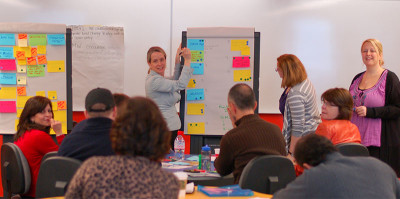STORY AND PHOTOS BY MEHREEN SHAHID
The Sheridan community may soon be bidding farewell to Access Sheridan, as the college implements a whole new interface emphasizing the “Get Creative” brand.
The move was just one of several outcomes of a college-wide creative problem-solving workshop held at the Hazel McCallion Campus Feb. 26 to 28 aimed at unleashing institutional creativity to solve Sheridan’s problems.
The decade-old Internet portal Access Sheridan has faced its fare share of issues related to login and connectivity.
Sumon Acharjee, chief information officer, attended the workshop to explore ways to streamline hiccups in the long-used software.
“The vendor is no longer supporting the technology,” he said. “There are too many access points to sign-in, so we need to integrate it. At this point, we don’t know what new technology we will use, but it’s in the process.”
The workshop was conducted by Gerard Puccio, who is chair and professor at the International Centre for studies in Creativity at Buffalo State University. Puccio has a PhD in Organizational Psychology from the University of Manchester in England.
“What’s really impressive and unique about Sheridan is that I’ve never seen an entire institution recognizing this is a 21st century skill and using creativity to adapt to the fast-changing world,” he said. “This is the first institution that has become a true pioneer in this, look at their slogan.”
Puccio spent the first two days of the workshop teaching members of Sheridan administration and staff various strategies of creative problem solving. Sheila Shaver, manager of academic governance and strategic initiatives at Sheridan, says the opportunity to participate was an open call to all professors and faculty; it was first-come-first-serve.
“This is our fifth offering of the workshop. We started with some leadership and faculty who had been working creativity into all of Sheridan’s curriculum, and they kind of broadened it to academic leadership and faculty,” she said. “Some of the faculty and professors who hadn’t taken this before attended.”
The participants in this event included seven administrators and 17 faculty members. The next session is being held April 28 to 30, 2014, and registration for it already begun. Out of the 25 participants who have registered for the follow-up workshop, eight are administrators and 17 faculty members.
Michael Evans, associate dean Digital Learning at Sheridan College, was also one of the clients who came forth with a problem in need of a creative solution. He wanted to find out how he could encourage faculty to incorporate technology in their teaching.
“This [workshop] helped focus on something very manageable,” said Evans. “The solution is plain and simple: to talk to people. I come out of this feeling I know who to talk to.”
Puccio explained that the group assisting Evans had used a technique called “Why, What’s Stopping You?” It is a clarification exercise that helps expose hidden issues in various problems. As part of the activity members also brainstorm to arrive at a number of solutions.
While Evans’ group was exploring strategies, another group next door was using a technique called “Assisters and Resisters” to help Sue Hutton from the office of corporate planning and sustainability.
“We looked at why we’re out of room. Really, because we have too much stuff,” said Hutton. “The methods of collecting and storage were assessed. We need a very strong space policy.”
Hutton said that the one thing she was hoping to get out of the day was to have stakeholders come up with solutions, and that is exactly what happened in her group exercise.
William Farkas, program coordinator for Internet Communications and Technology, was part of the group that help Acharjee streamline problems with Access Sheridan. He said that the process is pulling creativity out as Sheridan’s self-definition.
“College and university has to be a fountainhead of ideas for the community. What we’re doing now is giving Sheridan that chance. The whole process here is adaptation through creativity. There is no chance I won’t use it in my teaching.”
Fellow faculty member Linda Batch, professor of accounting at HMC, agreed with Farkas.
“I’ll be using techniques in my classroom for accounting systems techniques. In business scenarios to creatively apply models. So, in terms of preparing our students to be work-place ready, these techniques will help them get a sense of creative problem solving model.”

